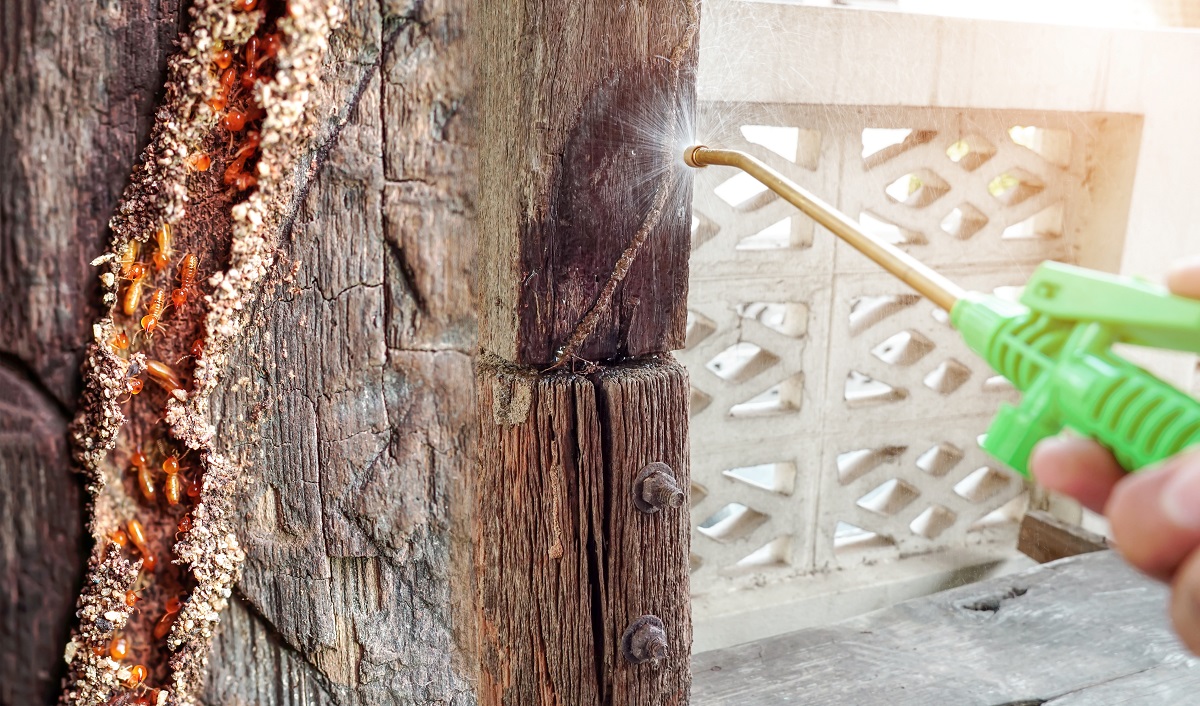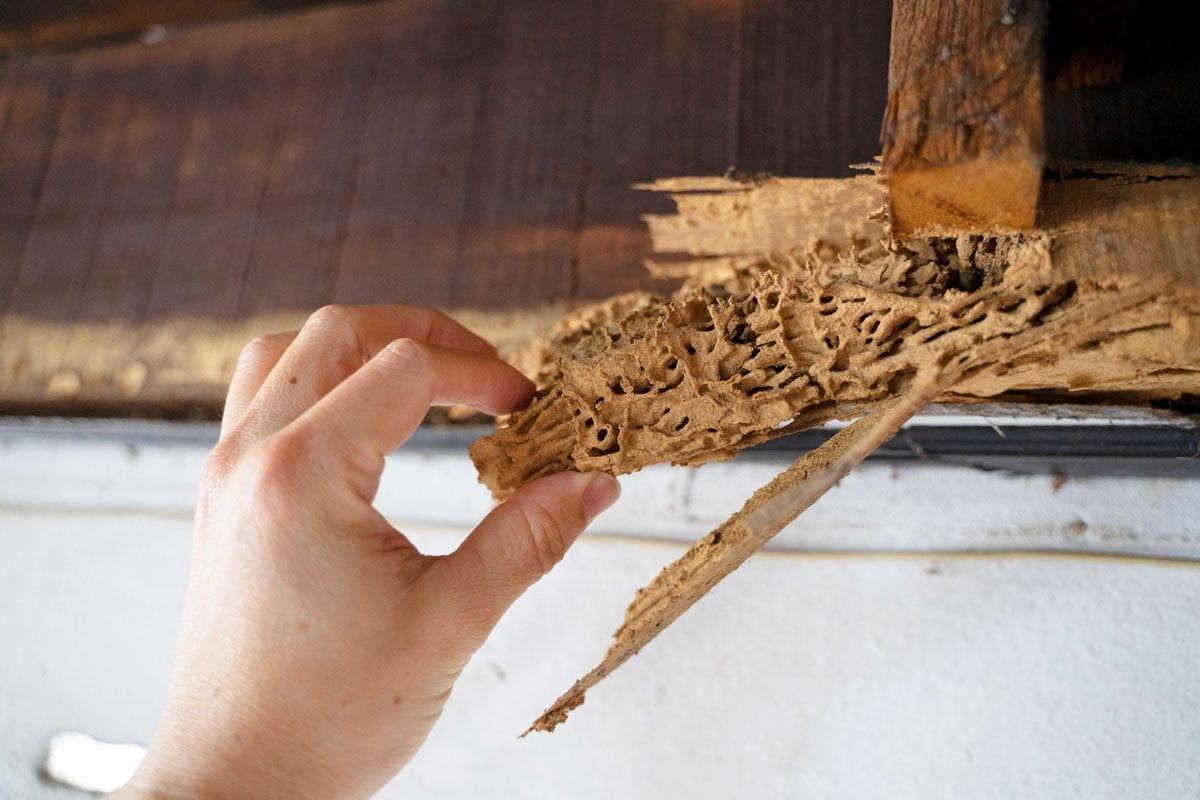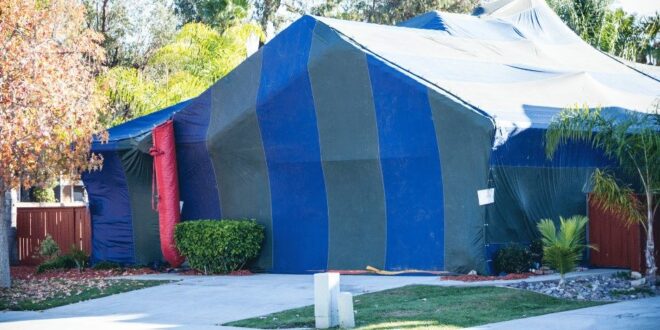Termites: the unseen invaders that can wreak havoc on your home, silently munching away at the very structure you depend on. As homeowners and property managers alike know all too well, these small pests are capable of causing extensive damage before their presence is even suspected. In the battle against termite infestation, fumigation stands out as one of the most effective means of eradication.
But what exactly does this process entail? Is it as simple as sealing up your house and waiting for the treatment to do its work? In this detailed guide, we will delve deep into the world of termite fumigation, exploring its intricacies—from the science that powers this method to the preparation needed and the aftermath of the treatment.
Whether you’re facing a potential infestation or seeking to understand preventative measures, this comprehensive overview will equip you with the knowledge necessary to safeguard your home from these destructive pests. Join us as we unravel the complexities and best practices associated with termite fumigation.
Introduction to Termite Infestations

Termite infestations are more than just a nuisance; they pose a significant threat to the structural integrity of homes and buildings. These elusive pests, often referred to as silent destroyers, can operate undetected for years, quietly munching away at wood and other cellulose materials.
As a homeowner, the mere thought of these destructive insects can incite feelings of dread, but understanding their behavior is the first step toward effective prevention and treatment. From the familiar subterranean termites that build extensive tunnels underground to the less common but equally damaging drywood varieties, each type presents unique challenges. In this section, we will delve into how these creatures infiltrate your space, the signs of an infestation, and why prompt intervention is crucial to safeguarding your property.
Signs of a Termite Infestation

Recognizing the signs of a termite infestation is paramount for early intervention and effective treatment. Firstly, look for mud tubes along the foundation of your home; these pencil-sized structures serve as highways for termites seeking nourishment.
Additionally, you might notice discarded wings near windows or light fixtures, a sure indication that swarming termites have ventured indoors. Pay attention to hollow-sounding wood; when tapped, infested beams emit a distinctive echo, a testament to the relentless munching occurring within.
Furthermore, subtle signs like frass—tiny wood-colored pellets—could hint at active nests nearby, while warped or buckled doors and floors may suggest structural damage. Vigilance is key; if something feels off in your home, it’s wise to consult a pest control professional before the tiny invaders establish a more permanent foothold.
What is Termite Fumigation?
Termite fumigation is a highly specialized pest control method designed to eradicate termite infestations from residential or commercial properties. This process involves sealing the entire structure with a tent-like cover and then introducing a gaseous pesticide, typically sulfuryl fluoride, into the space.
The idea is simple yet effective: the gas penetrates every nook and cranny, reaching hidden colonies of termites that traditional methods might miss. While the procedure may seem daunting, it effectively eliminates not only the visible pests but also their eggs, ushering in a fresh start for property owners.
However, fumigation is not just a one-size-fits-all solution; it necessitates the vacating of the premises for several days, prompting careful planning and consideration before proceeding. Understanding the intricacies and necessity of this method can help homeowners make informed decisions about protecting their biggest investment from these destructive insects.
Conclusion
In conclusion, understanding termite fumigation is essential for any homeowner looking to protect their property from the destructive forces of these pests. By becoming educated on the process, the various methods available, and the necessary precautions to take, you can make informed decisions that safeguard your home and investment.
Whether youre facing an existing infestation or simply seeking preventive measures, working with a licensed pest control expert will ensure that the termite fumigation process is executed effectively and safely. Ultimately, knowledge and proactive measures are your best allies in the battle against termites, helping you maintain a safe and healthy living environment.
 HQ Grande Prairie HQ Grandie Prairie is an online news portal aimed at providing latest day to day happenings of the World to its viewers.
HQ Grande Prairie HQ Grandie Prairie is an online news portal aimed at providing latest day to day happenings of the World to its viewers.


